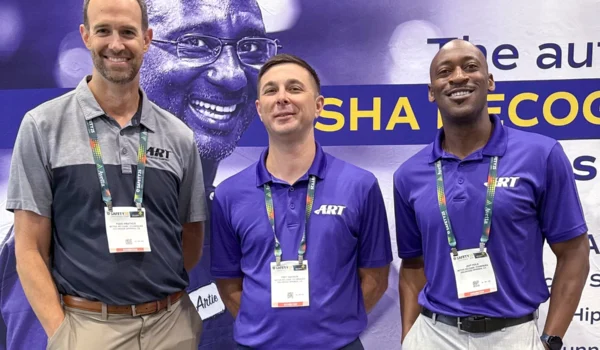Active Release Techniques (ART) is a hands-on, movement-based treatment system that focuses on resolving soft-tissue restrictions affecting muscles, tendons, fascia, ligaments, and nerves. It is used by a wide range of medical and health professionals to address pain, restore function, and improve performance in athletes and patients from all walks of life.
Among the many conditions ART Certified Providers encounter, five stand out as particularly common. Below, we’ll explore each injury, explain why ART is effective in treating it, and highlight a real case study involving Frozen Shoulder from ART Elite Provider, Dalyn Rhoades, OTD.
1. Frozen Shoulder (Adhesive Capsulitis)
Overview:
Frozen shoulder is characterized by progressive stiffness, pain, and loss of range of motion in the shoulder joint. It often develops gradually and can persist for months or even years without effective intervention.
Why ART Is Effective:
ART enables providers to identify and release soft-tissue adhesions and restrictions surrounding the shoulder capsule and associated musculature. By incorporating specific movements during treatment, ART improves mobility and decreases pain without relying solely on passive stretching or general manual therapy.
Provider Case Study: Dalyn Rhoades, OTD
One patient under Dalyn’s care had been suffering from frozen shoulder for over a year. After trying several other therapies without lasting success, the patient turned to ART. Through targeted treatment of the subscapularis, teres major, and anterior shoulder capsule, Dalyn significantly improved the patient’s range of motion and reduced their pain within just a few sessions.
“We saw the most improvement once we focused on the anterior capsule and surrounding tissues that were limiting functional overhead movement,” Dalyn shared. “It was a great example of how ART protocols allow us to get very specific with treatment.”
2. Carpal Tunnel Syndrome
Overview:
Carpal tunnel syndrome involves compression of the median nerve as it passes through the carpal tunnel in the wrist. Common symptoms include numbness, tingling, and weakness in the hand.
Why ART Is Effective:
ART enables providers to differentiate between true nerve compression and soft-tissue entrapment syndromes that mimic carpal tunnel syndrome. Adhesions around the flexor retinaculum, forearm flexors, or pronator teres can often be the underlying issue. ART helps identify and treat these areas to relieve nerve irritation and restore function.
3. Plantar Fasciitis
Overview:
Plantar fasciitis presents as sharp heel pain, especially in the morning or after periods of inactivity. It is frequently seen in runners, workers who are on their feet all day, and individuals with poor foot mechanics.
Why ART Is Effective:
ART targets the plantar fascia, intrinsic foot muscles, and calf complex to address soft-tissue restrictions contributing to pain. Releasing these areas restores proper foot mechanics and often leads to faster recovery compared to generalized stretching or rest alone.
4. Tennis Elbow / Golfer’s Elbow (Epicondylitis)
Overview:
These conditions involve overuse of the forearm muscles that attach at the elbow – either on the lateral (tennis elbow) or medial (golfer’s elbow) side. They cause localized pain and reduced grip strength.
Why ART Is Effective:
ART allows for precise treatment of the muscle-tendon junctions and fascial adhesions that drive the inflammation and dysfunction. By addressing restrictions in the extensor or flexor muscle groups, providers can improve healing, reduce strain, and restore movement.
5. Low Back Pain
Overview:
Low back pain is one of the most common reasons people seek medical care and miss work. Causes can vary widely and often involve a combination of soft-tissue dysfunction, joint restrictions, and compensatory movement patterns.
Why ART Is Effective:
Rather than simply treating symptoms, ART enables providers to assess and treat the underlying restrictions, whether in the quadratus lumborum, psoas, glutes, or hip rotators. ART’s movement-based system helps restore proper mechanics and reduce chronic compensation that often leads to pain recurrence.
These five conditions represent just a portion of what ART Certified Providers successfully treat every day. Whether the injury is acute or chronic, ART offers a structured, anatomy-specific approach to identifying and resolving soft-tissue dysfunction.
For providers already practicing ART, these cases reinforce the importance of detailed assessment and precise treatment protocols. For healthcare professionals considering ART certification, this treatment system offers a valuable and effective addition to your clinical toolkit, enabling better outcomes for your patients and expanding the scope of your practice.
Interested in becoming an ART Certified Provider?
Visit activerelease.com to explore upcoming seminars, certification options, and learn more about the ART methodology.




